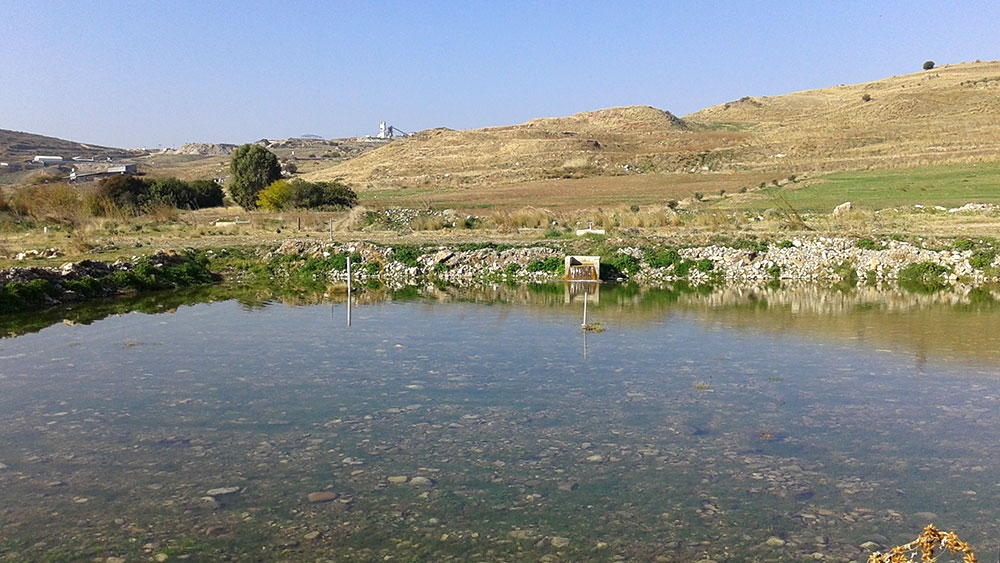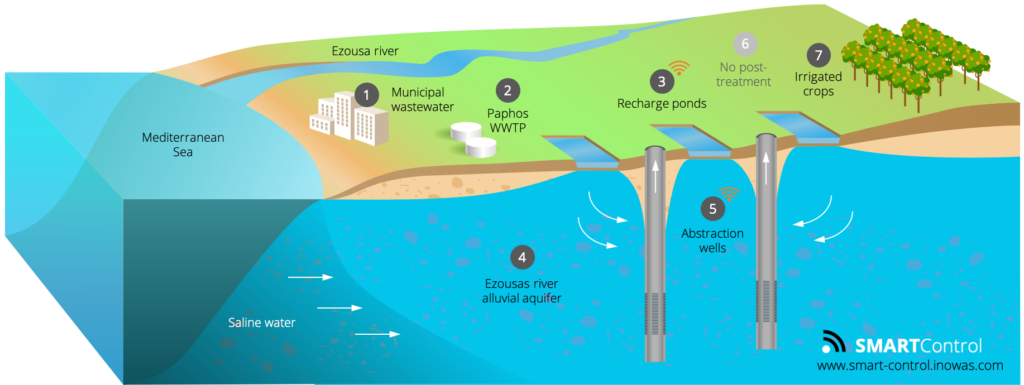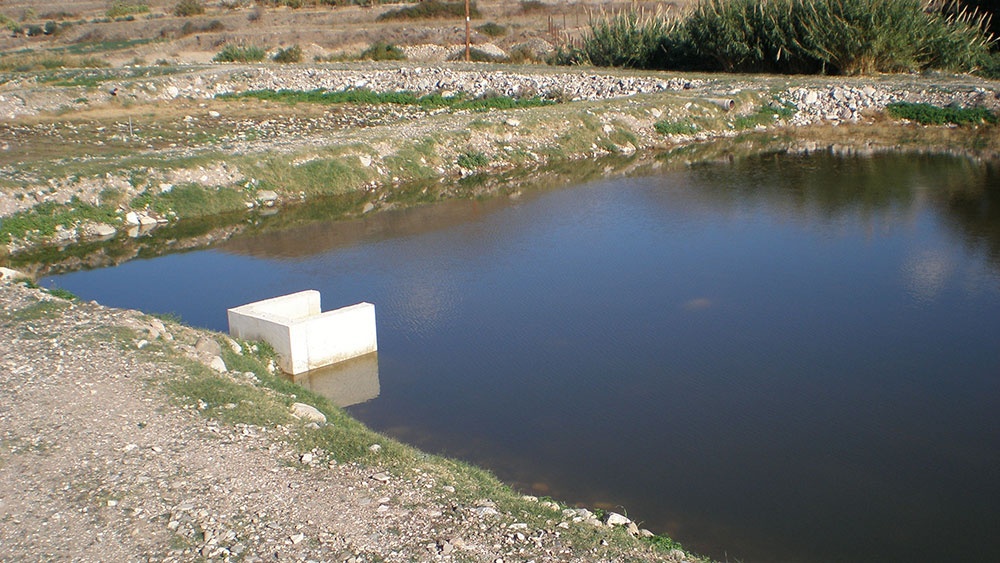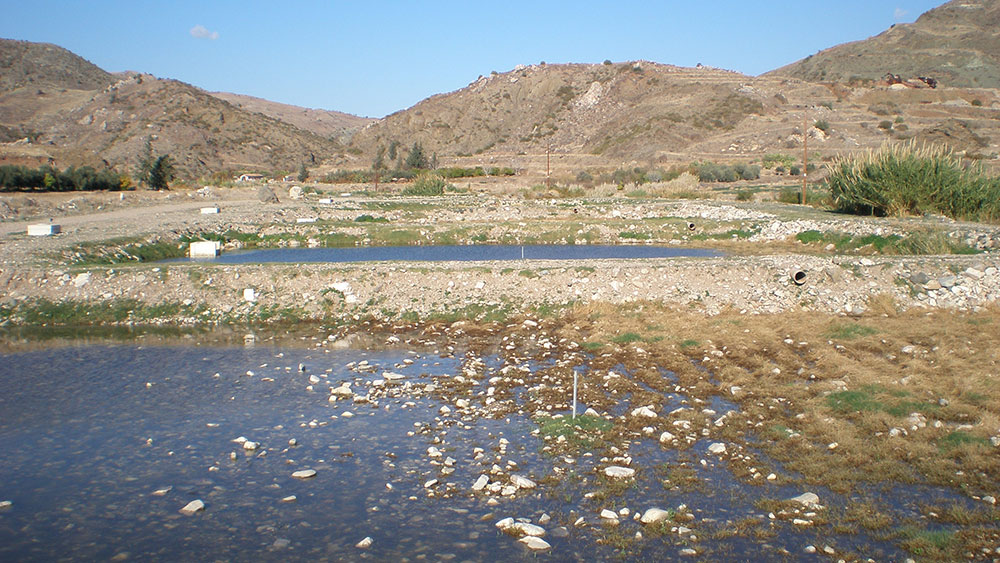
In the Ezousa catchment near Paphos (Cyprus), a coastal city in the southwest of Cyprus, a Managed Aquifer Recharge (MAR) site based on Soil Aquifer Treatment (SAT) has been constructed in 2003 for irrigation purposes. The coastal area has an intense agricultural activity and also supports the main urban centres that attract a growing number of tourists. Annual water demands for irrigation purposes are approximately 17 Mm3, while 3 Mm3 are consumed in tourism, including golf facilities (Christodoulou, personal communication, July 3, 2019). These demands exceed the sustainable water supply of the island, because groundwater reserves are being replenished at a slower rate than they are used. As a result, the Water Development Department of Cyprus (WDD) fostered the development of an MAR scheme in the Ezousa catchment by utilizing treated effluent for groundwater augmentation in the coastal aquifer.
Wastewater is captured from Paphos urban area with about 36,000 inhabitants and gathered at the Waste Water Treatment Plant (WWTP) station, where it is subject to tertiary treatment. Then, the treated effluent is transfered to infiltration basins through pipelines, where it percolates through the soil and reaches the groundwater. Abstraction wells are used to recover the water from the aquifer. After recovery the water is distributed without post-treatment to the end-users, who are mainly farmers. Citrus is the main crop in the region, while other vegetables such as tomatoes, cucumbers, spinach and lettuce are also present.

The MAR components of the Ezousa system are summarized below:
- Capture zone: Municipal wastewater
- Pre-treatment: Activated sludge, sand filtration, chlorination (gas chlorine)
- Recharge: Five infiltration basins
- Subsurface: Ezousas river alluvial aquifer
- Recovery: Five wells
- Post-treatment: none
- End use: Irrigation
The recharge network consists of five shallow infiltration basins arranged in a series from the coastline to about 8 km upstream. Infiltration rates were found to range between 70 and 120 mm/h1 (1.68 – 2.88 m/d). Each infiltration site consists of two, four or six recharge ponds, with each pond having a surface area of 2,000 m2 and a depth of 1.5 m. Each pond is designed with a 1 m overflow weir to avoid erosion of their embankments from excess flow. The operational approach is to maintain a significant unsaturated zone so as to maximize the amount of water recharged and optimize the quality of the recycled water by its passage through the soil matrix. The operational pattern of wet-dry fill cycles varies from pond to pond but normally each part of the cycle lasts between 5 to 7 days. The ponds are filled from a pressurized 500 mm ductile iron main. Groundwater withdrawal is from five wells located close to the infiltration basins. The abstracted water is then distributed to the end-users through a canal.


The MAR facility is currently only monitored manually and within SMART-Control, continuous monitoring using the RMCS will be setup. The specific objectives are to continuously monitor the effect of MAR on saltwater intrusion as well as the local water quality especially with respect to nitrate. Laboratory analysis of pathogens and heavy metals (copper) will accompany the online monitoring.